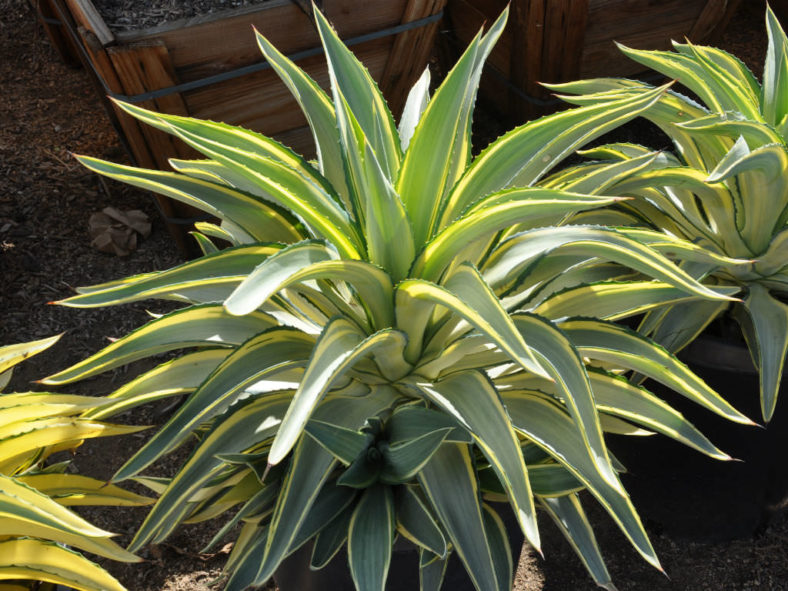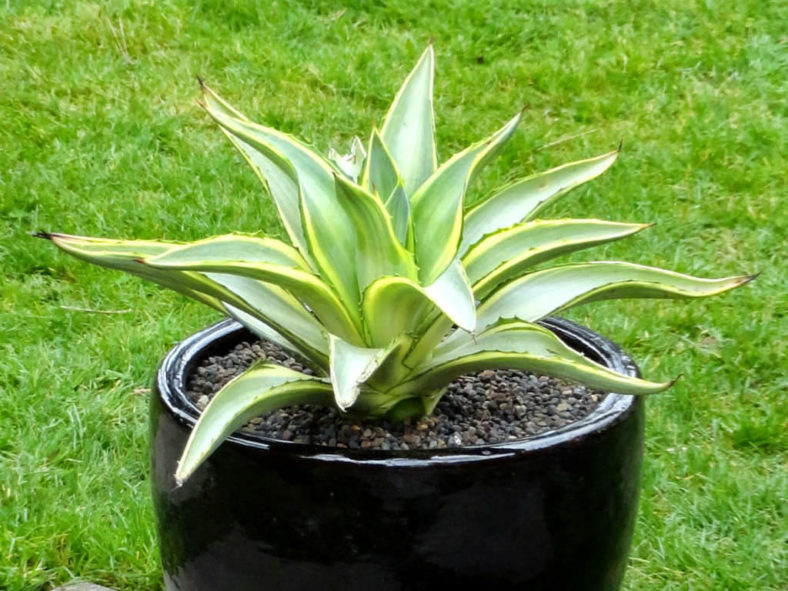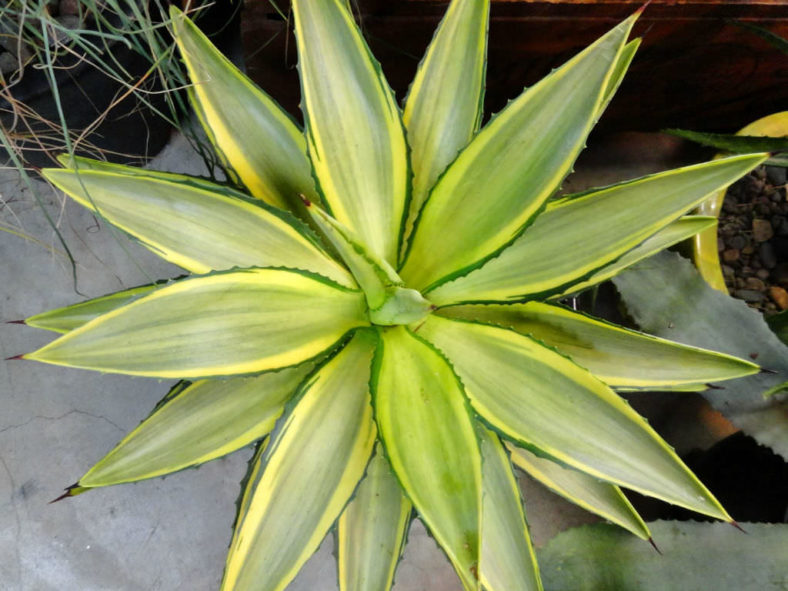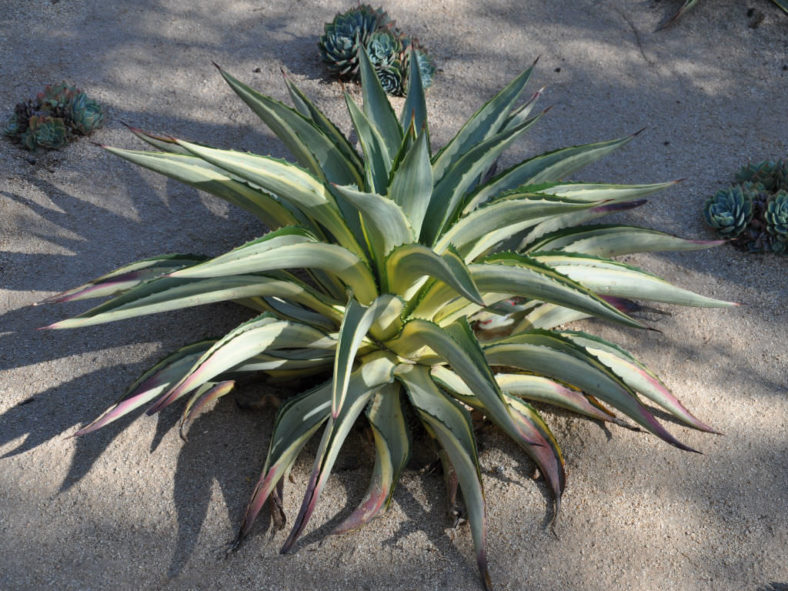Scientific Name
Agave nizandensis Cutak
Synonym(s)
Agave desmetiana 'Joe Hoak', Agave mendensis, Agave meridensis f. variegata 'Joe Hoak'
Scientific Classification
Family: Asparagaceae
Subfamily: Agavoideae
Genus: Agave
Parentage
This succulent is probably a hybrid or sport of Agave desmetiana. It is said to be from Hoak's Greenhouse and Nursery in South Florida, owned by Joe Hoak.
Description
Agave 'Joe Hoak', also known as Agave desmetiana 'Joe Hoak', is a fast-growing succulent that forms attractive rosettes of leaves with pale gray-green and cream striations and dark green margins. The rosettes can reach up to 2 feet (60 cm) in height and 3 feet (90 cm) in diameter and usually produce many offsets. The leaves curve upward, then out, growing up to 2 feet (60 cm) long. They have small marginal teeth and a reddish-brown terminal spine up to 0.5 inches (1.3 cm) long.
Panicles of pale yellow flowers usually appear in summer on mature plants older than eight years, on a flower stalk that can grow up to 3 feet (90 cm) tall.

How to Grow and Care for Agave 'Joe Hoak'
Light: These plants require full sun to part shade. If you are growing Agaves indoors, choose a bright, sunny window with as much sun as possible. Agave plants love going outside from spring to fall.
Soil: Agaves will tolerate most soils as long as they have good drainage but prefer sandy or rocky soil.
Hardiness: Agave 'Joe Hoak' can withstand temperatures as low as 25 to 40 °F (-3.9 to 4.4 °C), USDA hardiness zones 9b to 10b.
Watering: Mature plants are very drought tolerant. From spring to fall, water thoroughly your Agave when the soil mix becomes dry. In winter, water sparingly about once a month. Plants in containers require more frequent watering than those in the ground.
Fertilizing: Give your Agaves a small amount of fertilizer in the spring during the first two years.
Repotting: When the pot becomes full of roots, it has become pot-bound. If you notice your Agave becoming pot-bound, repot it with new soil in a pot slightly larger than the old one.
Propagation: Since it can take years to produce seeds, Agaves are usually propagated by offsets.
Learn more at How to Grow and Care for Agave.
Toxicity of Agave 'Joe Hoak'
Agave 'Joe Hoak' is not toxic to humans but may be mildly poisonous to children and pets.
Links
- Back to genus Agave
- Succupedia: Browse succulents by Scientific Name, Common Name, Genus, Family, USDA Hardiness Zone, Origin, or cacti by Genus
Photo Gallery
Click on a photo to see a larger version.


